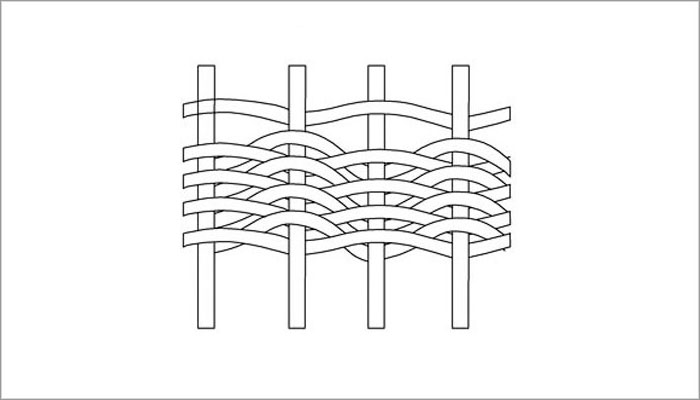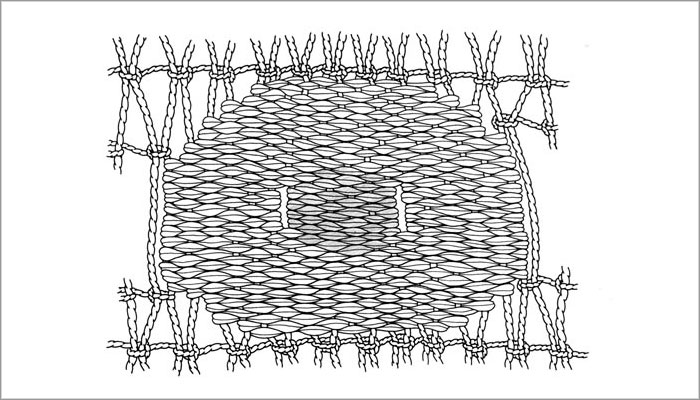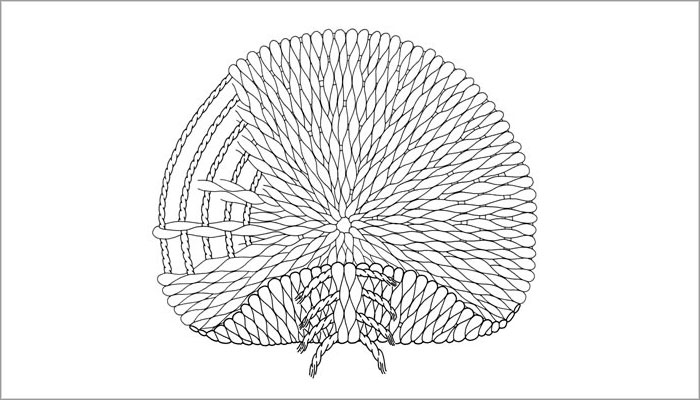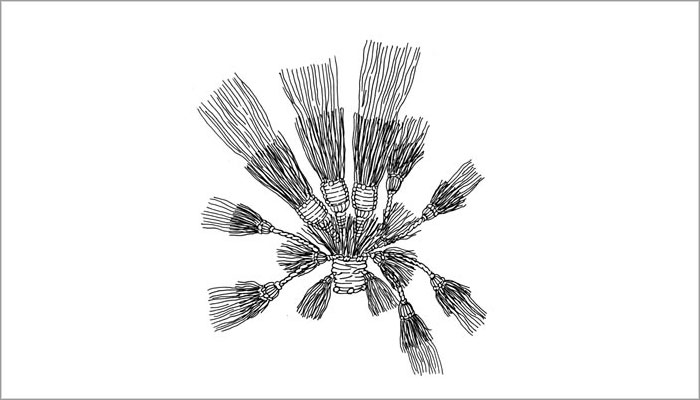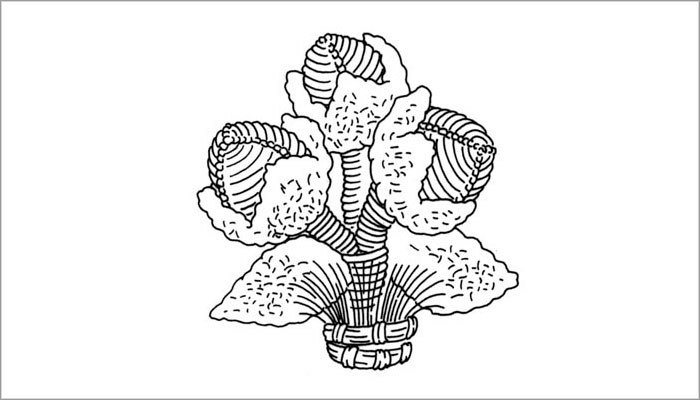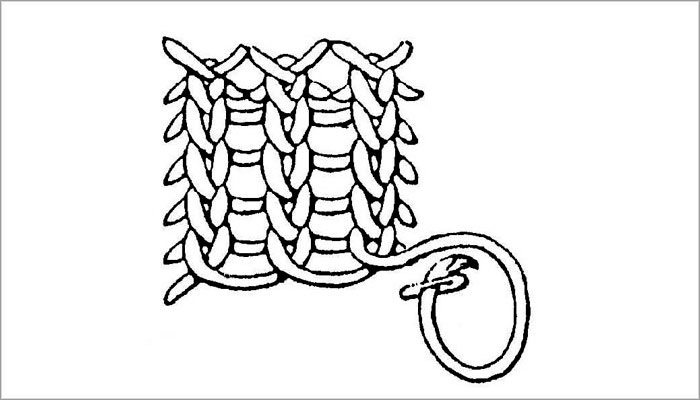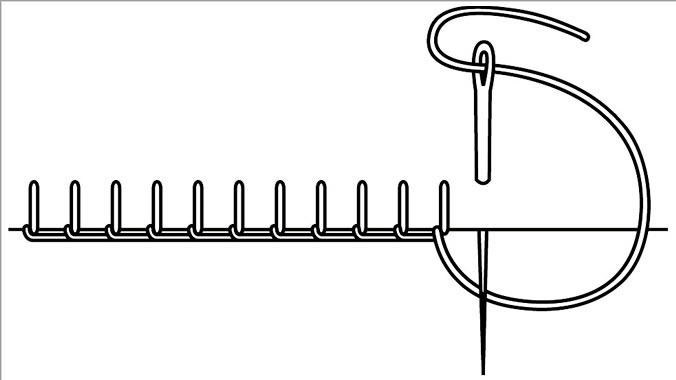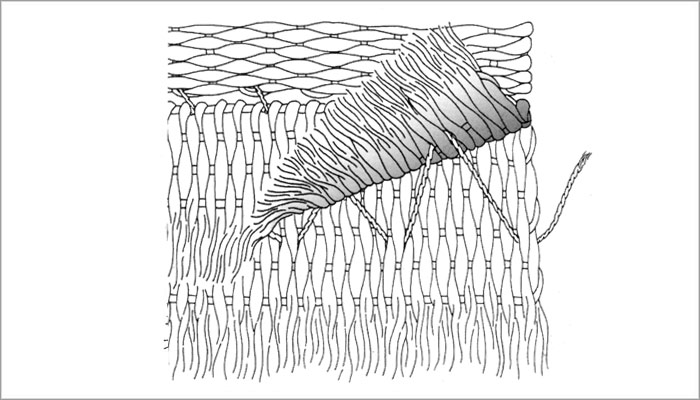Chimu, Labyrinths of a sacred costume
Textiles structures of the ceremonial costume
The ground
The ground weaving is a composed of a counterpoint of open and closed plain structures. The former were made using the techniques of reticular weave with a triangular base, plain gauze weave, and plain weave. The closed structures were made using weft-face weave, slit or openwork tapestry, and an eccentric weft weave, to give the textile the needed strength in the areas where the piece contains open and transparent zones. Both types of structures rigorously maintain the orthogonal shape of the cloth by means of a reticule of lines and columns.
The applied designs
These were made separately and independently of the ground weaving. According to their shapes and techniques, one can distinguish:
Woven discs, were made with cotton warps, woven using the weft-face technique with camelid fiber. To form a disc out of a piece of plain weave, the ends of each warp were tied together and then tightened progressively to form a circle.
Tassels, were made with a handful of doubled threads made of camelid fiber. The ends were trimmed evenly and the tassel sewn onto the textile’s ground. According to the way it was made and its location on the textile, one can distinguish: simple tassels of yellow color, that are the bases for volumetric weavings; triple tassels, which are located at the perimeters of the rectangular modules, as well as bordering the stepped crosses of the central design; and complex tassels, that are composed of groups of simple tassels at the base, from which threads hang that end in tassels with two layers of fringe, or in large tassels that emerge out of its center. The last style is only found in the central sector of the breechcloth’s short skirt and has a more intense tone of red that that of the tassels on the other garments of the costume.
Volumetric weavings, are repeated, with minor variations, in organized patterns on the textile. They were attached to the plain discs, as well as at the thorax of the personages in profile. There are 12 types of volumetric designs that represent plant motifs, made with different techniques, such as wrapping, cross-knit looping, winding , plain braiding, festoon, and seaming, among others. Flowers or cotton capsules have been identified, as well as leaves and flowers of tubers, flowers and cobs of corn (Zea mays) and possibly coca leaves (Eritroxilum coca).
The finishing
The most important finishing was the fringe, which was attached to the edges of the garments. Fringes were woven independently with cotton warps and camelid fiber wefts. They were then sewn onto the garment. They were of just one color: yellow, ochre or red. We can find simple fringes or fringes with layers of wefts sewn together, which are characteristic of Chimú textiles.






































